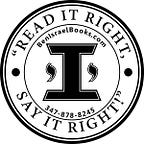Unlocking the Spiritual Treasures: Exploring the Hebrew Prayer Book
In the world of religious practice, few artifacts hold the depth, history, and significance of the Hebrew prayer book, also known as the Siddur. A beautifully bound compilation of sacred texts, the Hebrew prayer book is more than just a collection of verses; it is a vessel that carries the hopes, aspirations, and connection to the divine for countless individuals.
Let’s embark on a journey into the heart of the Hebrew prayer book, discovering its origins, structure, and profound role in Jewish worship.
Origins and Evolution
The Hebrew prayer book has a rich history that spans centuries. Its origins can be traced back to the time of the Second Temple in Jerusalem, when communal prayer services began to take form. Over time, the prayers and blessings recited by Jewish communities were compiled, curated, and organized into a structured framework. This evolution culminated in the creation of the Siddur, a comprehensive prayer book that serves as a guide for daily and special occasion prayers.
Structure and Contents
The Hebrew prayer book is meticulously structured, with each section serving a distinct purpose within the framework of Jewish worship. While variations exist among different Jewish traditions and denominations, the core elements remain consistent:
Shacharit: This section is recited upon awakening and includes blessings of gratitude, the Shema, and the Amidah.
Minchah and Ma’ariv: These sections mark the bookends of the day and include prayers of reflection, supplication, and gratitude.
Shabbat and Festivals: Special prayers and readings are included for the Sabbath and Jewish holidays, creating a sense of sanctity and connection to the sacred rhythms of time.
Hallel and Psalms: Sections containing Psalms and songs of praise are recited on joyous occasions and festivals.
Selichot and High Holidays: Special prayers for forgiveness, introspection, and repentance are included during the High Holidays, reinforcing themes of renewal and spiritual growth.
Birkat Hamazon: This section includes blessings and prayers recited after consuming food, acknowledging the divine sustenance of life.
Tachanun and Tefillat Haderech: Prayers of supplication and protection are recited in times of need or travel.
Connection and Devotion
The Hebrew prayer book serves as a bridge between the individual and the divine, offering a channel for communication, reflection, and introspection. For Jewish worshippers, the Siddur is not merely a collection of words; it is a means of connecting to the spiritual essence of their faith and heritage. Through the rhythmic cadence of recitation, the poignant verses, and the collective voice of generations, the prayer book becomes a vessel for both personal devotion and communal unity.
Briefly Put!
The Hebrew prayer book is a testament to the enduring power of faith, connection, and tradition. Within its pages lies a tapestry of prayers that encapsulate the spectrum of human experience — gratitude, yearning, joy, sorrow, and hope.
